The Nordic Asa-community Blót Calendar.
What kind of calendar is NAS/NAC based on?
The Nordic Asa community’s holiday calendar follows the pre-Christian heathen lunisolar calendar which includes both lunar and solar cycles during the year unlike the Julian calendar and Gregorian calendar which are solar calendars. This kind of calendar was followed by most pre-Christians and can be traced back all the way to the Stone Age.
The heathen calendar contained 12 months with an extra leap month inserted every two or three years, the extra leap month inserted during the summer. The months lasted from new moon to the change between full moon and new moon, from new moon to new moon simply explained (referred to as new and below in the sources) which made the pre-Christian months start and end at different times than our months do today. The full moon was and is an important time for Asatru and for Germanic paganism, as well as many other pre-Christian religions. It was at the full moon in a specific lunar month that the blót was performed and not at any point in the season, e.g. vernal equinox. The modern “heathen” calendar where seasons, e.g. vernal equinox constitutes the timing of heathen holidays is not historically based, but it is built on loose 17th and 19th century theories as well as 20th century neo-heathenry with influences from other belief systems e.g. wicca and way of life.
In pre-Christian times, the year was not divided into 4 different seasons as today ie. winter, spring, summer and autumn, but the year was divided into two half-years, Summer semi-year and Winter semi-year, each semi-year was divided into 2 quarters in total the year consisted of 4 quarters. The first quarter lasted from winter nights in September/October to midwinter in January/February, the second quarter lasted from midwinter to summermál in April, the third quarter lasted from summermál to midsummer in July, and the fourth quarter lasted from midsummer to winter nights in September/October.
The holidays (blót´s) that we perform are 5 in number distributed over 1 year, all of them are historically covered in the sources. In addition to these 5, we organize a large Summer Blót around the real midsummer time, which is in July, this blot is not historically based, but the blot that we in the community have created.
Because the holidays fall on a specific full moon, the holidays do not fall on the same date every year, the holidays are floating over a 19-year cycle. With that, there is only one fixed time of the year and that is the Winter Solstice and it is from the Winter Solstice that you start from together with the first new moon after the Winter Solstice to calculate when the holidays fall, the new moon is important because depending on whether it falls too close to the winter solstice or not, you can calculate whether an extra month (leap month) should be pushed into June/July. This calculation is called the Disting rule.
The Blót´s.
In the Ynglinga Saga, chapter 8 (depending on which translation and version) Snorre Sturlusson writes that Odin makes a law on 3 blót´s in the country Svitjod (Sweden) which they must perform.
The first blót is at the beginning of winter which is for good year, Winter Nights. The second blót is at midwinter (not to be confused with the winter solstice) which is for good crop, Midwinterblot/Yule/Hokunótt. The third blót is at the beginning of summer, it is for victory and success, Sigurblót (Victory Blót).
In addition to these three blots, there are 2 more mentioned blót´s in the sources, one is Disting/Disablót and the other is Álfablót.
Counting the number of full moons means that the blot does not have fixed dates, but it differs from year to year.
What is a blót?
Blót means sacrifice and was a way for our ancestors to appease the Gods so that they would give people good harvests and a good life. Depending on what they wanted, they were exposed to different gods. To Thor, for good weather on boat trips. To Odin, to share his wisdom, etc.
Here you can download a description of how to perform a blót in modern times (It´s in Swedish).
Here are the annual 5 blót´s that the Nordic Asa-community carries out according to what is found in the sources.
Blót Calendar 2024, the year of Frigg.
ATTENTION!
The dates follow Swedish time.
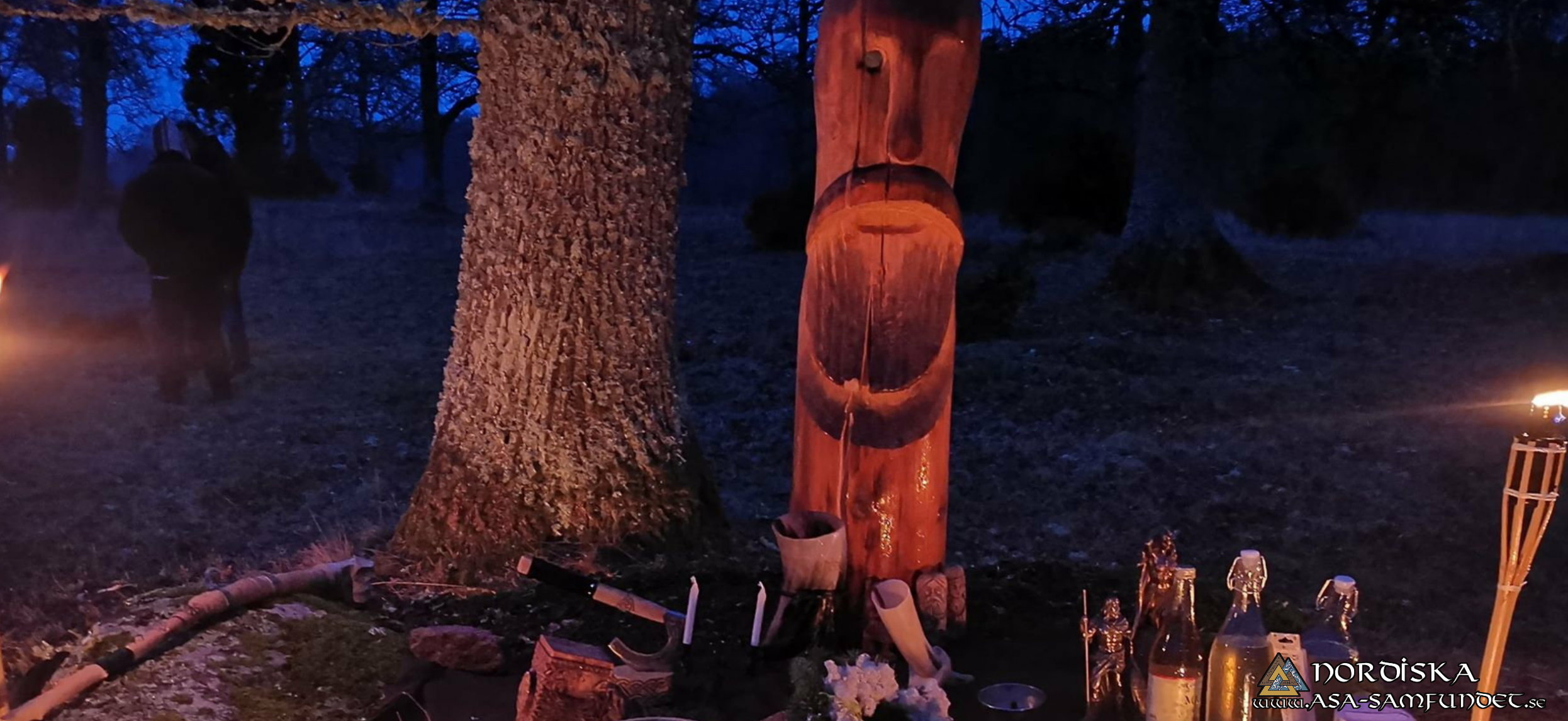
MIDWINTER BLÓT / YULE
January 25 – 27 2024
This blót is the second blot that Odin enacts in the Ynglinga Saga, which is a blót at midwinter. According to pre-Christian reckoning of time, the middle of winter (miðjum vetri) was exactly the middle of the winter semi year, which was in February (today January 14 according to the Gregorian calendar). Midwinter first became synonymous with the winter solstice as late as the 18th century. The sources state that hokunótt is in midwinter and it was hokunótt who started the heathen yule. Midwinter Blót/Hokunótt/Yule is much disputed about and when this happened and what the origin was. But what is certain is that yule was not celebrated at the winter solstice, December 24/25 or at what is today Lucia (13 december).
In Hakon the Good’s Saga, it says that he moved yule from hokunótt (midwinter time) to the Christian holiday of Christ’s birth (December 25th), but here in the Nordics it ended up on December 24th. It also says that the heathen yule was celebrated for three days.
The Midwinter Blót/Heathen yule falls on the first full moon after the first new moon after the winter solstice and lasts for three nights.
Visit Events to see when our Blót kindreds organize Midwinter blót/Yule.
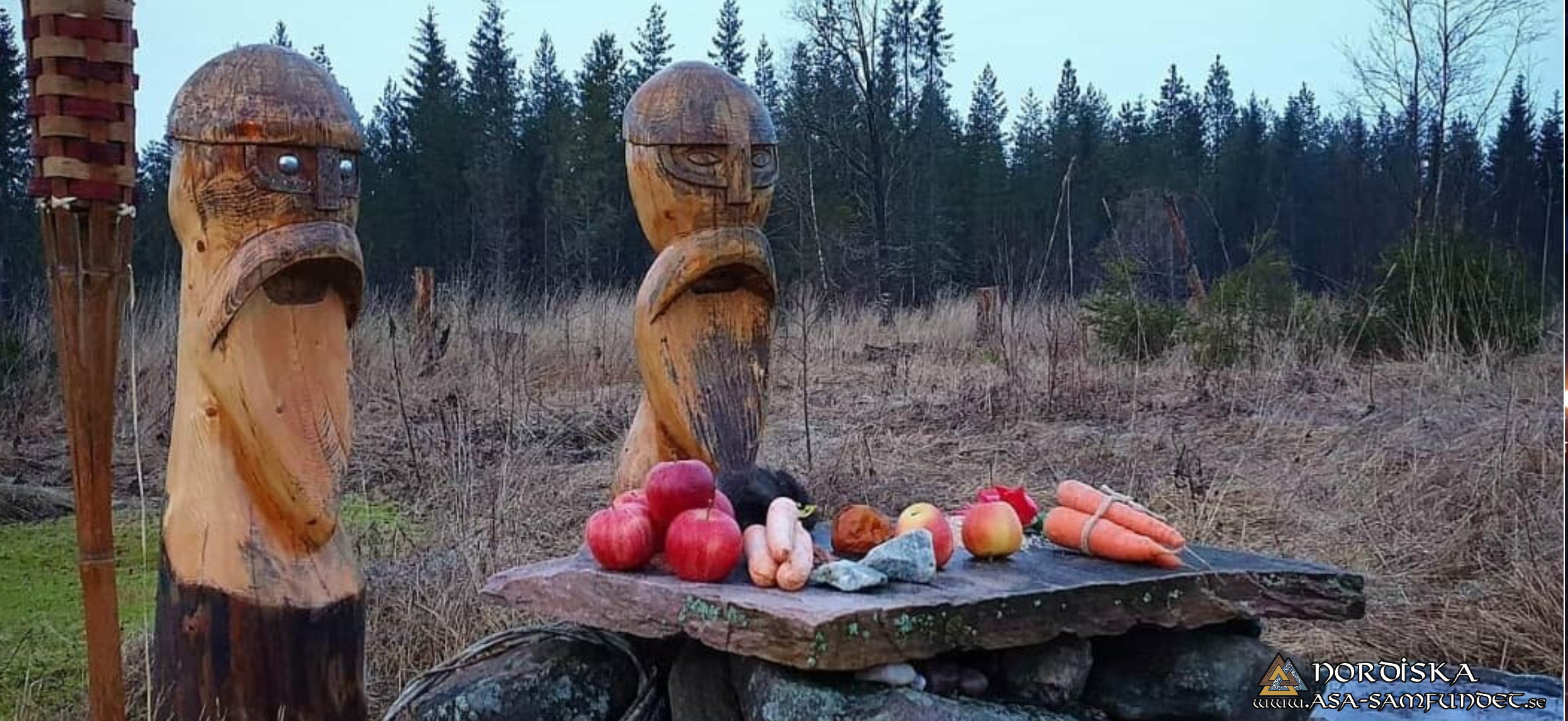
DISABLÓT
March 25 2024
The Disablót (Disting) is one of the most famous blót´s, and like the Midvinter blót/yule one of the most misunderstood blót´s. The Disablót did not take place at the beginning of February, but at the third month called Göja/Göje (today between around the end of February and mid-March). It was when the Swedes were Christianized that the Disting/Disablót was moved to the Christian holiday of the Candle Mass, which is at the beginning of February (today on February 2) and even today Disting market is organized.
Disting/Disablót is mentioned by Adam of Bremen, according to him, this simply takes place in Old Uppsala in the month of Göje after the vernal equinox and all inhabitants of Svitjod (Sweden) had to participate, if they did not want to participate they had to pay a fine.
The disablót falls on the third full moon after the first new moon after the winter solstice (the full moon before the Victory Blot).
Every eight years (ninth in our way of counting today) the Distinget was held for 8 nights, a market was organized that has survived the christinization. In addition to the market, there were also horse races, celebrations and, of course blót, that was usual things that were customary at Allting.
The Disablót is dedicated to Diser´s, the female powers and goddesses.
In the Icelandic sources it is mentioned that the Disablót was performed in connection with the festival of Winter Nights, this is probably the Icelanders’ and Norwegians’ time for the Disablót while the Swedes held it in the spring.
Visit Events to see when our Blót kindreds organize Disablót.

SIGURBLÓT / VICTORY BLÓT
April 24 – 26 2024
The Sigurblót (Victory Blót) is the 3rd blót that Odin makes law in Svitjod, and takes place at the beginning of summer. Also this blót is disputed about when it should have taken place, some claim that it is at the spring equinox others at Walpurgis Night. But it is clear that the blót should take place at the beginning of summer (today, according to the Gregorian calendar, April 14).
There is not much written about the Sigurblót other than that it is a blot for success and victory.
The Sigurblót falls on the third full moon after the Midwinter Blót and lasts for three days from the full moon.
Visit Events to see when our Blót kindreds organize Sigurblót/Victory blót.
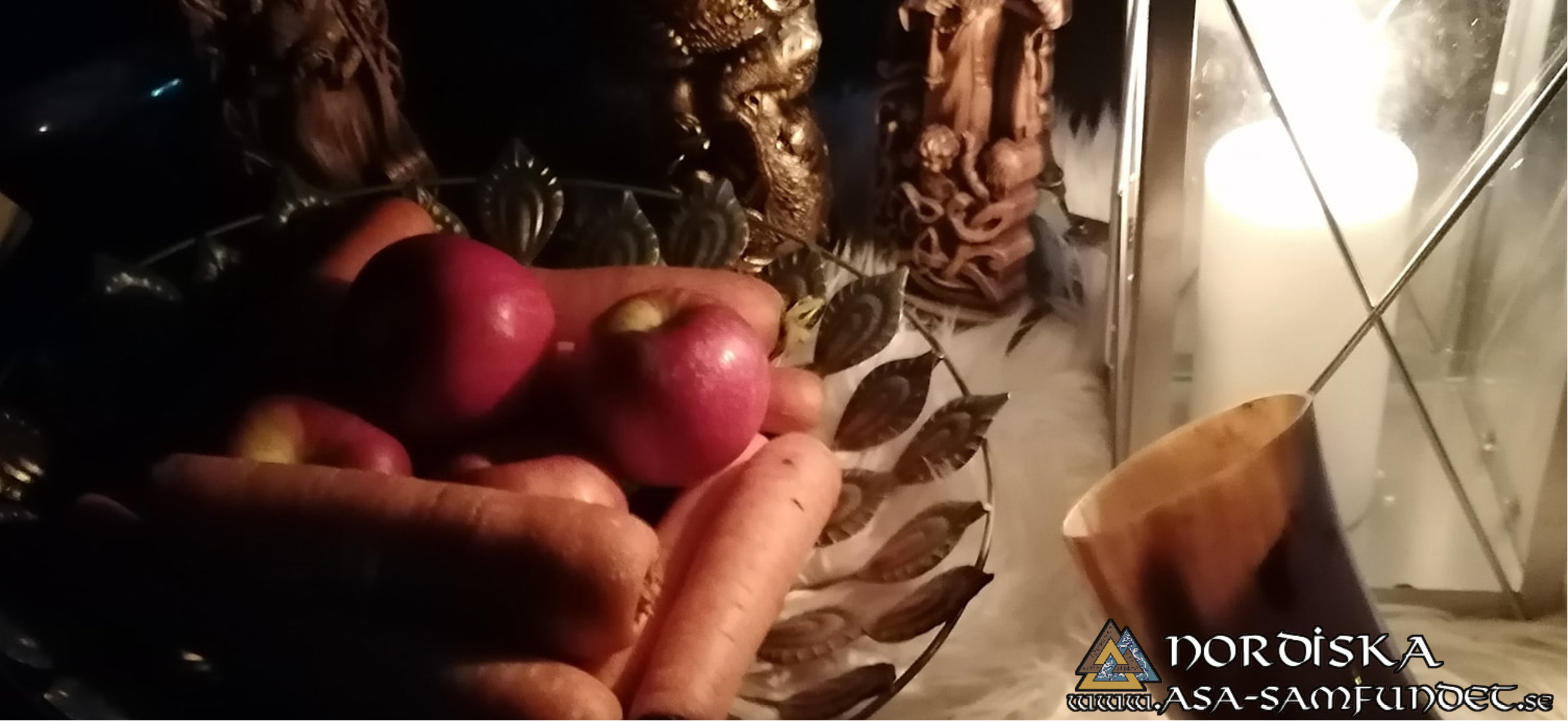
WINTER NIGHTS
October 17 – 19 2024
In Ynglinga, Winter Nights is mentioned as the first blót of Odin, a blót dedicated to a good coming year. Which can be interpreted as the beginning of a new year.
The Winter Nights are at the first day of winter and the starting point of the winter semi-year, in our modern Gregorian calendar the first day of winter is October 14, but in the heathen lunisolar calendar the festival falls at the full moon in the month Haustmánuður which means harvest month which today falls around September/October, (the word haust is an old name for harvest/carrying).
Winter Nights fall on the third full moon before the Midwinter Blót and last for three days from the full moon.
Icelandic sources also mention the Disablót in connection with the Winter Nights.
Visit Events to see when our Blót kindreds organize Winter Nights.
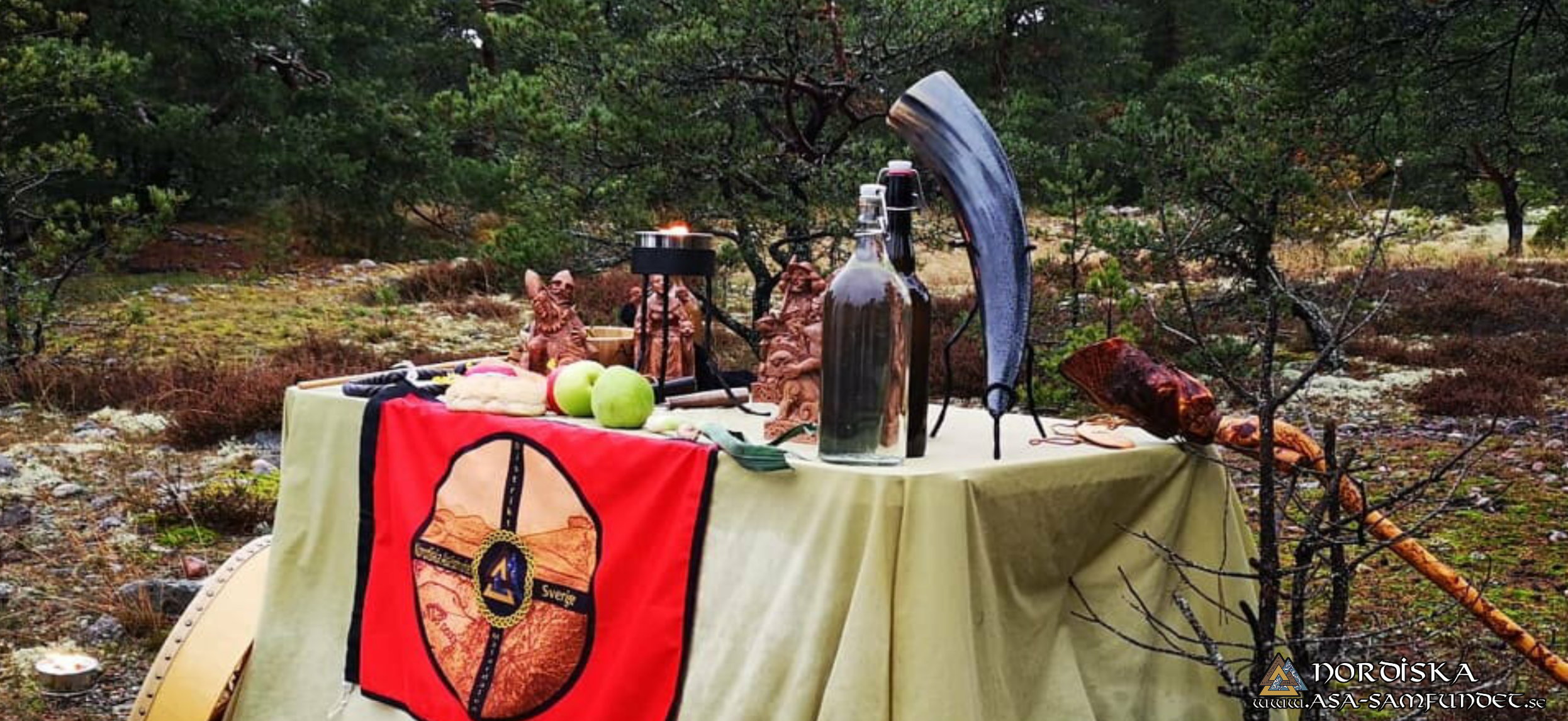
ÀLFABLÓT
November 15 2024
The Álfablót is one of the two blots mentioned in the Icelandic sources, there are mainly two sources about Álfablót, Austrfararvisur and Olof the Saint’s Saga, both sagas are based on each other. The Álfablót is a blót in true ancestor worship, where the blót is dedicated to our ancestors, family members, relatives, kinsmen and kinswomen who are not with us today. According to the sources, this blót is a private blót for family and relatives.
The Álfablót falls on the first full moon after the Winter Nights.
Visit Events to see when our Blót kindreds organize Álfablót.
Here are blót´s or other days that are noticed by NAS/NAC that are not historically covered in sources.
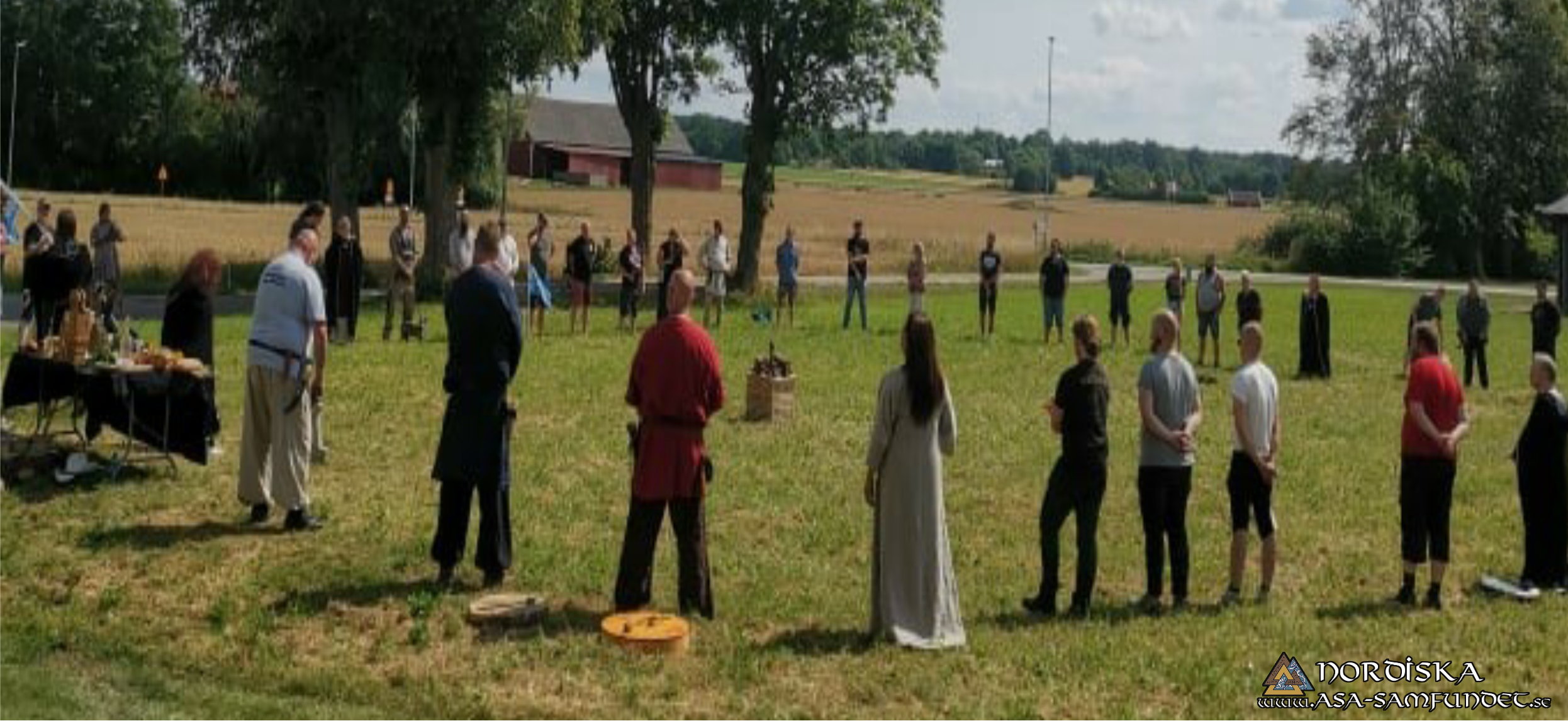
NAS/NAC SUMMER BLÓT
July 20 2024
This blót is not found in the sources, but it is believed that a mid-summer blót should have existed but there are no sources for it.
This is the community’s own annual blót which takes place around the full moon in July.
The summer blot is organized at Rök Runestone in Ödeshög, Sweden.
More information about the Summer Blót can be found here.
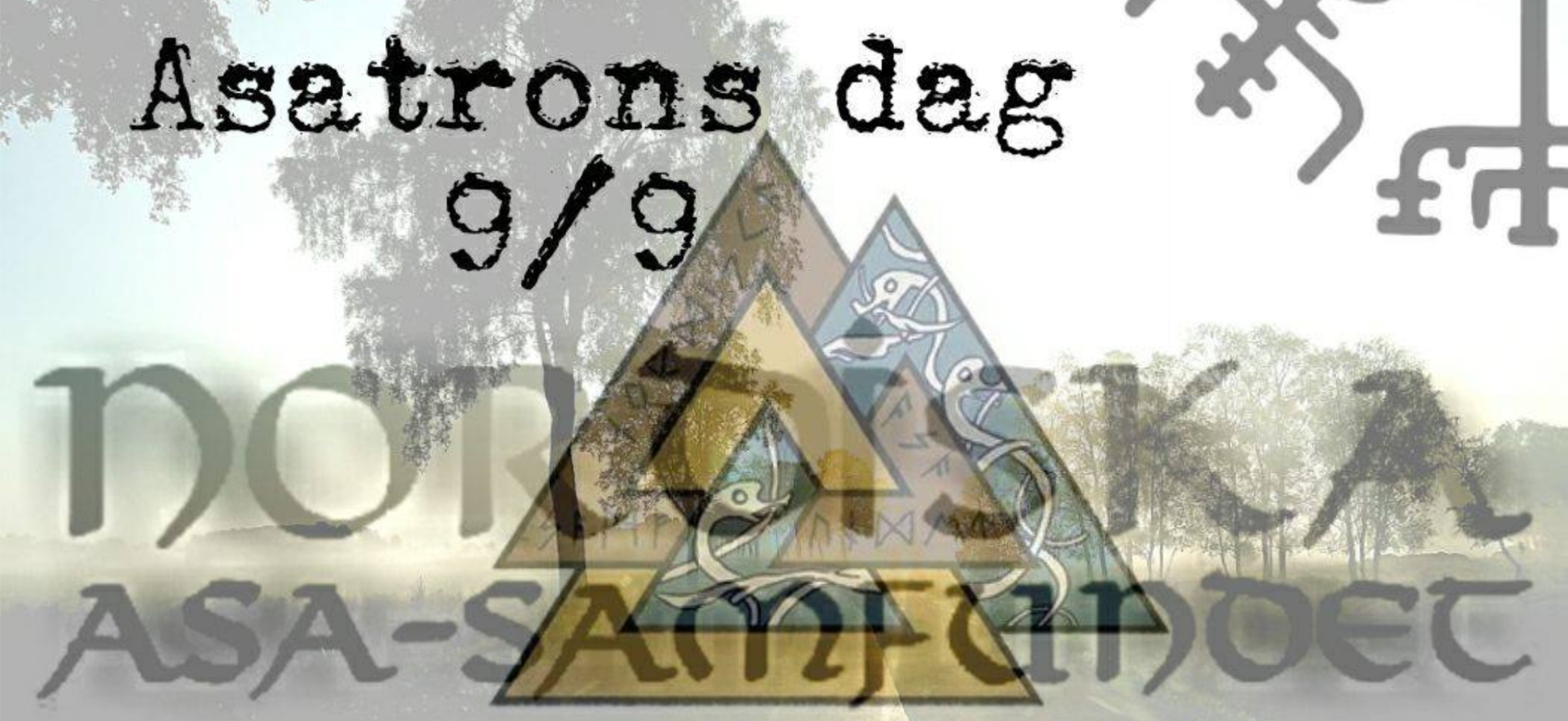
THE ÁSATRÚ DAY
September 9
This day was created by the community to celebrate the Ásatrú itself.
9/9 (September 9) every year is the holy day. Nine days Odin hung himself, for himself, in Yggdrasil, Nine worlds are in the universe.
The Ásatrú Day is a day for reflection and a day to honor with good food and drink together with family and/or loved ones. A day that we should give an extra thought to those around us in our everyday lives and those who have given us everything we have to enjoy. Young and old.
We also take the opportunity to blót together and show the powers that be that we honor them and show our appreciation. A blót where we do not ask for anything in return but a blót of respect.



